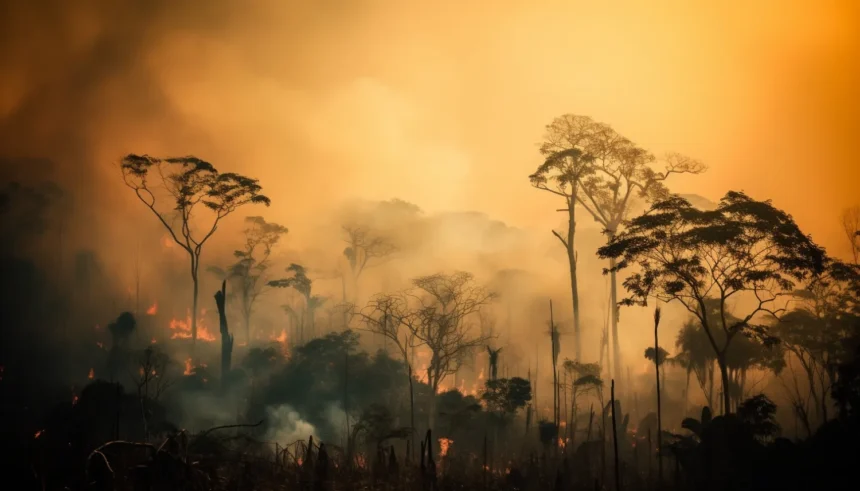Introduction: A Silent Collapse in the Lungs of the Earth
By 2025, we stand face-to-face with a sobering reality — the Amazon rainforest, long hailed as the lungs of the Earth, has lost 17% of its pristine canopy, taking with it countless species, ecosystems, and climate-stabilizing power. The truth is, we’re not just losing trees; we’re losing intricate webs of life that have thrived for millions of years.
This article explores the current state of Amazon biodiversity loss in 2025 — how far the damage has gone, what we’ve already lost, and what the implications are for the planet and us. Using current data, scientific insights, and ecological analysis, we map out the irreversible damage and the dwindling hope we still cling to.
Read More: Facts about the Amazon Rainforest: Uncover the Disturbing Secrets it Holds
The Amazon: Earth’s Greatest Biodiversity Engine
The Amazon rainforest is not just the world’s largest tropical forest — it’s the most biologically diverse ecosystem on the planet. Stretching across more than 2.7 million square miles, it spans nine countries: Brazil, Peru, Colombia, Venezuela, Ecuador, Bolivia, Guyana, Suriname, and French Guiana. Brazil alone holds about 60% of this expansive natural wonder, making it the key steward of what scientists call the “lungs of the Earth.”
Read More: British Columbia’s Inland Temperate Rainforest: 5 Exclusive Facts
Let’s take a deeper look at its biological richness:
- 🌳 Over 390 billion trees, representing roughly 16,000 tree species, form a multilayered canopy that powers the forest’s natural processes — from photosynthesis to carbon storage.
- 🐛 The Amazon harbors nearly 3 million known species of plants, insects, birds, amphibians, reptiles, and mammals — and experts believe many species remain undiscovered, especially among insects and fungi.
- 👣 It is home to more than 400 Indigenous groups, including approximately 100 uncontacted tribes who have preserved unique cultural and ecological knowledge systems, often passed down orally for centuries.
What makes the Amazon so unique isn’t just the volume of life, but the complexity of interdependence within its ecosystems. Every species — from a fungus breaking down organic matter to a jaguar patrolling its territory — plays a role in maintaining balance.
Read More: Rainforest Food Web: Brutal or Beautiful? Explore the Jungle’s Hunger Games
🌍 A Global Climate Engine
The Amazon’s trees absorb massive amounts of carbon dioxide — around 2 billion metric tons annually — making it one of the Earth’s most powerful carbon sinks. At the same time, the forest releases moisture into the air through transpiration, helping to regulate rainfall patterns not only in South America but as far away as the United States.
A breakdown of its environmental functions:
- Carbon Storage: Locks away climate-warming CO₂, stabilizing global temperatures.
- Rainfall Regulation: Generates “flying rivers” of vapor that fuel rain across the Americas.
- Climate Buffer: Dampens the effects of global warming by stabilizing temperature extremes.
- Soil Fertility: Sustains nutrient-rich ecosystems vital to plant and microbial life.
But as Amazon biodiversity loss continues in 2025, these natural systems begin to unravel. Deforestation, rising temperatures, and habitat fragmentation disrupt not only local life forms but also the rainforest’s ability to function as a global climate moderator.
“The Amazon isn’t just a forest. It’s Earth’s largest pharmacy, water factory, and carbon bank, all rolled into one.” — Dr. Adriana Ramos, Instituto Socioambiental, Brazil — it’s a global climate engine and a living archive of evolutionary history.
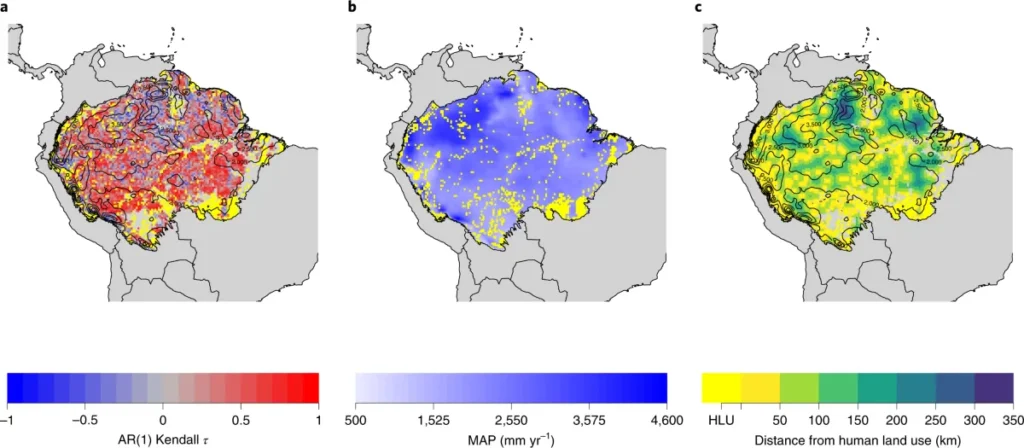
Read More: Climate Change Affects the Fate of the Amazon Forests: 3 Alarming Tipping Points You Need
Timeline of Amazon Biodiversity Loss (1970–2025)
Let’s take a closer look at how the Amazon has deteriorated over the decades:
| Time Period | Key Events & Drivers | Biodiversity Impact | Notable Statistics / Facts |
|---|
| 1970–1980 | Expansion of the Trans-Amazonian Highway under Brazil’s military regime; land giveaways for agriculture | Fragmentation of primary forests begins; habitat loss for large mammals like jaguars | ~1.5% Amazon deforested; biodiversity assessments were minimal at the time |
| 1981–1990 | Rapid growth in cattle ranching and soy monocultures; little regulation | Native grasses, amphibians, and forest birds displaced; ecosystem fragmentation spreads | By 1990, 8% of Amazon already cleared (approx. 300,000 sq mi) |
| 1991–2000 | Introduction of agricultural subsidies, illegal logging increases; global demand for timber rises | Old-growth trees cut; loss of microhabitats for orchids, birds, and reptiles | Deforestation rate peaks at 29,000 sq km/year in late ’90s |
| 2001–2010 | Satellite monitoring begins; Brazil enforces forest protection laws | Some deforestation slowdown, but biodiversity loss continues in fragmented regions | First reports of species decline: 30% amphibian drop, insect studies begin |
| 2011–2015 | Global commodities boom; soy & beef exports spike | Wildlife corridors cut off; species migration disrupted | 60% of mammal species in Amazon show population decline signs |
| 2016–2019 | Fires increase during drought years; political rollback of environmental protections | Mass insect loss reported; primate populations affected in fire zones | 2019: Over 906,000 hectares burned in Amazon wildfires |
| 2020–2022 | COVID-19 economic crash leads to enforcement drop; illegal activity surges | Poaching, unregulated land grabs; Indigenous land invasions escalate | 2021: Amazon becomes carbon source for the first time (Nature Journal) |
| 2023 | Weak environmental policy enforcement in Brazil & Peru; lack of global funding | Over 20 species newly listed as endangered; habitat regeneration slows | Deforestation rebounds to 13,000+ sq km for the year |
| 2024 | Climatic tipping points near; prolonged dry season, forest fires worsen | Forest canopy fragmentation leads to water cycle disruptions; pollinators decline | 24% decline in pollinator-dependent tree species (INPE data) |
| 2025 | Confirmed loss of 17% of original rainforest cover (Reuters, March 2025) | Near-extinction of regional species like Spix’s horned frog, White-nosed saki monkey | Over 10,000 species now critically endangered; many ecosystems nearing collapse |
Source: WWF, Reuters, IPBES 2025
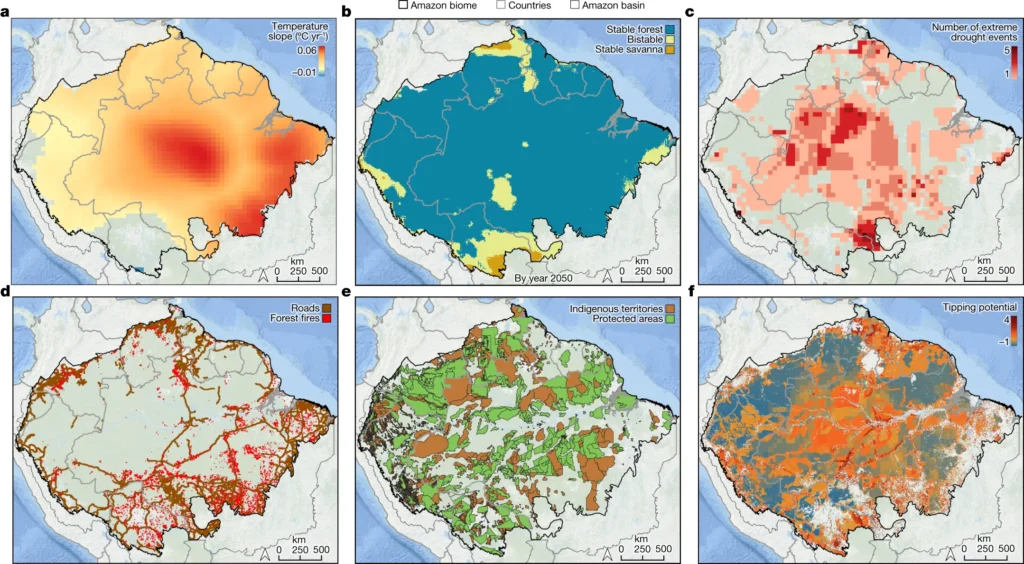
“The Amazon may be nearing an irreversible tipping point,” warns the UN Environment Programme in its latest 2025 assessment.
Read More: Beware of the Bites: 5 Dangerous Snakes in the Amazon River
What We’ve Lost by 2025: A Quantitative Breakdown
The Amazon biodiversity loss by 2025 is no longer theoretical — it’s measurable, visible, and devastating in scope. Species that once thrived in remote, untouched areas of the rainforest are now facing rapid extinction. As deforestation accelerates and climate disruptions intensify, the Amazon’s intricate ecological networks are unraveling before our eyes.
🐒 Species Extinctions and Displacement
Recent data from the WWF, the IUCN Red List, and leading ecological studies paint a grim picture:
- Over 10,000 species within the Amazon Basin are now classified as critically endangered. This includes not just rare mammals and birds, but also insects, amphibians, reptiles, and plant species essential to the forest’s self-sustaining cycles.
- Populations of mammals like the White-nosed saki monkey, once common in Brazil’s Pará and Amazonas regions, have declined by more than 80% in the last two decades. Likewise, the Spix’s horned frog, a bioindicator species critical for assessing forest health, is now on the brink of extinction due to habitat degradation and altered hydrological cycles.
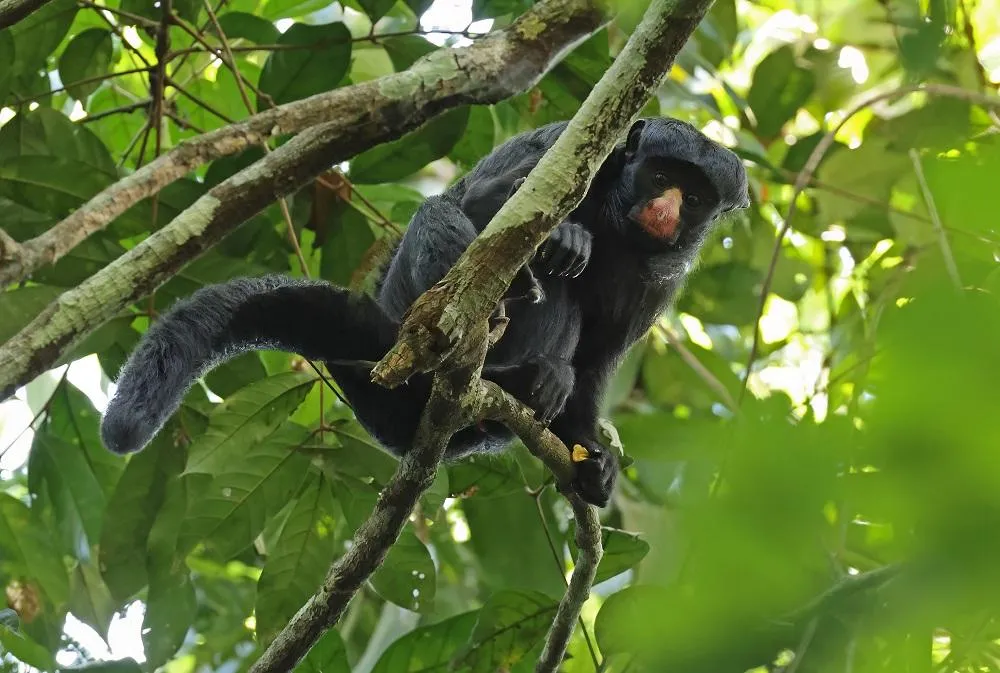
- Deforestation and fires have led to genetic isolation, reducing reproduction and adaptability. As deforested zones and man-made clearings expand, species are becoming cut off from one another. This limits their ability to breed, exchange genes, and adapt to environmental changes, leading to inbreeding, reduced fertility, and localized extinctions.
🌱 Ecosystem Collapse
The loss of individual species is only one side of the crisis. What’s more alarming is the collapse of entire ecosystems that once supported millions of life forms in balance.
Here are some of the most heavily impacted ecosystems:
1. Floodplain Forests
- Once nourished by seasonal river overflows, these areas are now drying due to river flow alteration and illegal damming activities.
- Iconic species such as the Amazon river dolphin and fish like the Arapaima are losing their breeding grounds.
- Drying wetlands also means fewer nutrients are returned to the forest floor, accelerating soil degradation.
Read More: Discover the Red-footed Tortoise: Rainforest Gem or Endangered Icon?
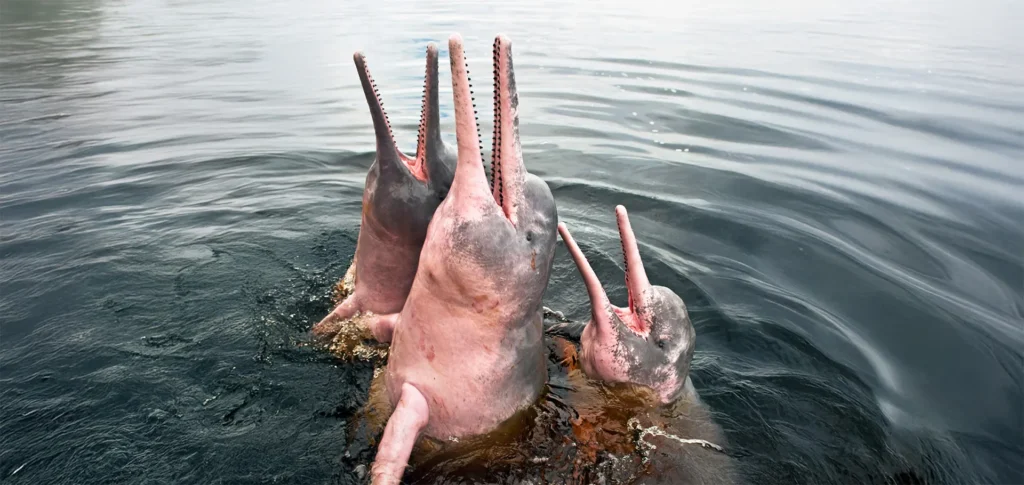
2. Orchid-Rich Canopies
- Logging for high-value tropical hardwoods has decimated the upper layers of the forest, where thousands of orchids, bromeliads, and canopy-dwelling insects live.
- These plants are not just ornamental — they host important pollinators and act as microhabitats for smaller animals.
3. Pollinator Insect Habitats
- Perhaps one of the most silent casualties of the Amazon biodiversity loss has been its insect population.
- Studies show that over 70% of wild pollinators are in decline, largely due to pesticide drift, forest fragmentation, and climate variability.
- This poses a direct threat to plant reproduction, fruiting cycles, and the survival of other animals that rely on fruits and seeds.
4. Soil Microbiomes
- Amazon deforestation statistics now show an alarming increase in soil erosion and nutrient depletion, especially in previously untouched areas.
- Healthy rainforest soil is alive — rich with fungi, bacteria, and organic matter. As deforestation spreads, these microbiomes are wiped out, turning fertile land into barren, degraded zones.
🔍 Key Environmental Interactions Being Disrupted:
| Ecosystem Service | Function | What’s Being Lost |
|---|---|---|
| Seed dispersal | Maintains tree diversity | Frugivorous birds, monkeys declining |
| Carbon sequestration | Balances CO₂ levels | Fewer old-growth trees, degraded soils |
| Water recycling | Generates rainfall | Reduced transpiration due to canopy loss |
| Pest control | Balances insect populations | Decline of insectivorous birds, bats |
| Indigenous ecological knowledge | Guides forest stewardship | Displacement of native communities |
🔍 Key Takeaway
By 2025, we’ve lost more than trees — we’ve lost genetic diversity, ecosystem function, and nature’s ability to adapt.
Read More: Unmask the 10 Most Dangerous Tribal Communities in the World
Why It Matters to All of Us
The Amazon biodiversity loss is not just a local or regional issue. Here’s how it directly affects the United States and the world:
🌍 Global Climate Balance
- The Amazon absorbs 2 billion tons of CO₂ annually — now diminished due to forest degradation.
- With carbon sinks turning into carbon sources, the climate crisis accelerates.
💨 Atmospheric Impact
- Deforestation disrupts atmospheric rivers, reducing rainfall across North and South America.
- Agricultural zones in the U.S. Midwest may face drier growing seasons as a result.
🌾 Economic Ripple Effects
- Loss of pollinators and pharmaceutical plant sources impacts global food security and medical research.
Read More: Giants of the Sky: Atmospheric Rivers – Rainfall Heroes or Flood Villains?
Can We Reverse Amazon Biodiversity Loss?
There’s still some hope, but it’s fading fast. Here’s what’s being done — and what’s failing:
✅ Successful Efforts
- Re:wild Initiative has reintroduced native tree species in over 400,000 acres.
- NASA’s AI deforestation alerts now detect illegal logging in real time.
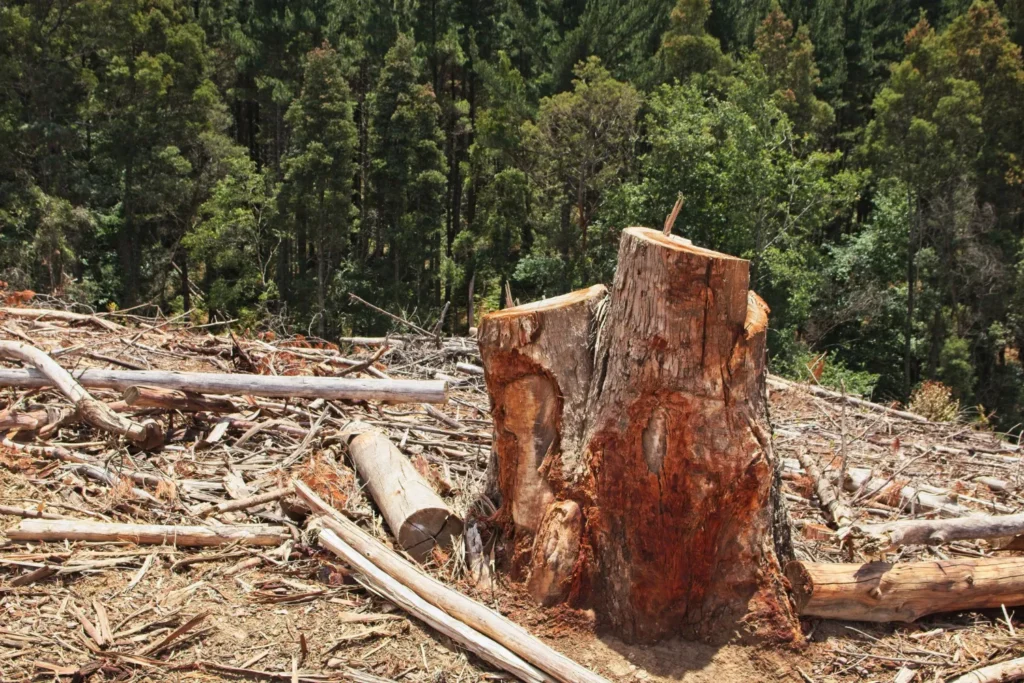
❌ Challenges
- Weak enforcement of protected zones in Brazil and Peru
- Exploitation by illegal miners and loggers goes unchecked
- Budget cuts to global conservation programs post-pandemic
Top 5 Steps We Can Take Now
- Avoid Amazon-linked soy, beef, and palm oil
- Support organizations like Rainforest Alliance and Amazon Watch
- Use certified wood and paper products
- Pressure policymakers to enact trade policies protecting the Amazon
- Educate others — share, write, speak up
Final Thoughts on the Lungs We’re Losing
The Amazon rainforest isn’t a distant green blur on a map — it’s a living system, tied intimately to our climate, our food systems, and our future. As of 2025, we’ve already lost 17% of its untouched forests, and that figure keeps climbing. Species we never discovered have vanished. Indigenous cultures are threatened. The balance we’ve relied on is teetering.
Yet, our generation has the tools, technology, and awareness to pivot — if we act swiftly and collectively. Every conscious purchase, every policy push, every awareness post counts. The Amazon may be far, but it’s our responsibility here in the U.S. too. Because when the lungs of the Earth fail, we all struggle to breathe.
FAQs
1. What is Amazon biodiversity loss?
The decline or extinction of plant and animal species due to deforestation and ecosystem degradation in the Amazon.
2. How much of the Amazon is lost by 2025?
About 17% of pristine rainforest has been lost, according to Reuters and WWF data.
3. Why is the Amazon called the lungs of the Earth?
Because it produces 20% of the world’s oxygen and stores vast amounts of carbon.
4. Can Amazon biodiversity be restored?
Some parts can recover through rewilding, but full restoration may take decades.
5. What species are most at risk?
Primates, amphibians, orchids, and many endemic insects face the highest extinction risk.


